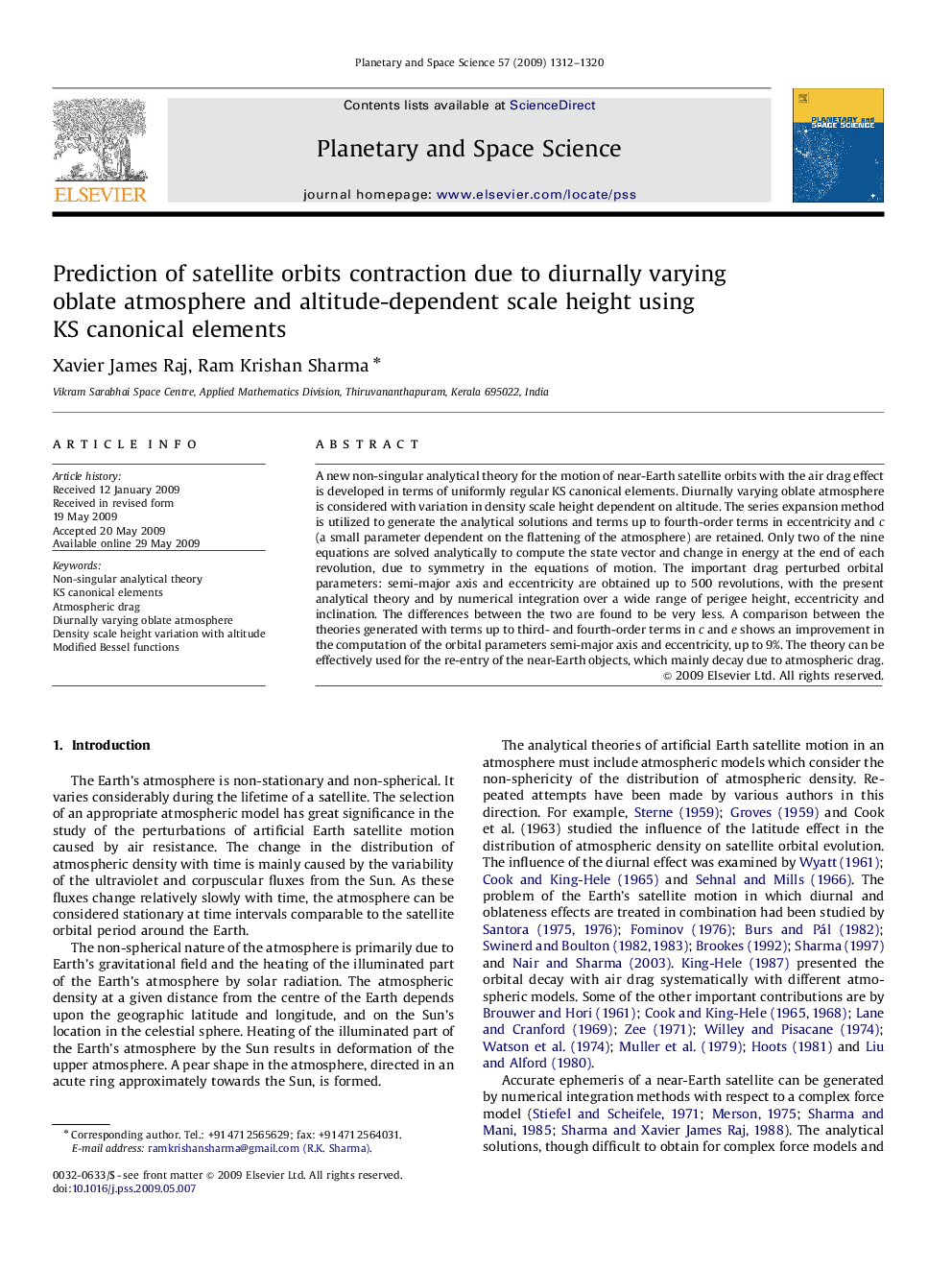| Article ID | Journal | Published Year | Pages | File Type |
|---|---|---|---|---|
| 1782114 | Planetary and Space Science | 2009 | 9 Pages |
A new non-singular analytical theory for the motion of near-Earth satellite orbits with the air drag effect is developed in terms of uniformly regular KS canonical elements. Diurnally varying oblate atmosphere is considered with variation in density scale height dependent on altitude. The series expansion method is utilized to generate the analytical solutions and terms up to fourth-order terms in eccentricity and c (a small parameter dependent on the flattening of the atmosphere) are retained. Only two of the nine equations are solved analytically to compute the state vector and change in energy at the end of each revolution, due to symmetry in the equations of motion. The important drag perturbed orbital parameters: semi-major axis and eccentricity are obtained up to 500 revolutions, with the present analytical theory and by numerical integration over a wide range of perigee height, eccentricity and inclination. The differences between the two are found to be very less. A comparison between the theories generated with terms up to third- and fourth-order terms in c and e shows an improvement in the computation of the orbital parameters semi-major axis and eccentricity, up to 9%. The theory can be effectively used for the re-entry of the near-Earth objects, which mainly decay due to atmospheric drag.
